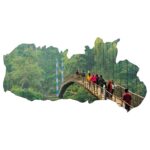Manipur: 7 Incredible Insights into its History, Culture, and Significance
Introduction
Manipur, a vibrant state located in the northeastern part of India, is known for its rich cultural heritage, historical significance, and stunning natural beauty. Often referred to as the “Jewel of India,” it is a land steeped in tradition, diversity, and a sense of pride that resonates with its people. From its ancient roots to its current political and social landscape, Manipur offers a unique blend of history, culture, and modernity. In this article, we will dive into Manipur’s biography, its daily life impacts, the historical context, significance, and how it plays an important role in shaping Indian society.
History
It’s history dates back to thousands of years and has been shaped by its geographical location, diverse communities, and the socio-political developments over time. The state’s history is deeply intertwined with its ethnic groups, with the Meitei people playing a dominant role. The kingdom of Manipur, once a thriving and independent region, was ruled by numerous kings, the most notable being King Nongda Lairen Pakhangba in the 17th century.
It also has a rich history of resistance against foreign domination. The state was involved in several wars and uprisings, notably against the British colonial forces in the 19th century. Manipur eventually became part of India after its integration in 1949, though it has since seen periods of social unrest and political struggles. Despite challenges, the spirit of resilience remains a defining feature of the Manipuri people.
Daily Life and Impacts
The daily life is shaped by the state’s unique cultural practices, festivals, and the strong bond with nature. Most Manipuris lead a community-oriented lifestyle, with a deep focus on family values, traditions, and local festivals.
One of the most significant cultural elements is Manipuri dance, a classical dance form that originates in the region and is known for its graceful and spiritual movements. The Lai Haraoba festival, dedicated to the gods, is another important cultural observance, bringing the community together to celebrate the spirits of the land.
Sports also play a major role in everyday life. Manipur is often dubbed as the “Sports Capital of India”, as it has produced world-class athletes in disciplines like football, boxing, and wrestling. The success of sports figures like Mary Kom, a six-time world boxing champion, has brought global recognition to the state, inspiring youth and empowering communities.
The state’s economy is predominantly agricultural, with rice being the staple crop. Handicrafts, such as manipuri shawls, and traditional weaving are also a key part of local life, contributing to the economy and preserving the traditional art forms. However, Manipur continues to face challenges like economic underdevelopment, insurgent activities, and political instability, which impact the day-to-day lives of its people.
Key Facts
- Geography: It is located in the northeastern part of India and shares borders with Myanmar.
- Capital: The capital of Manipur is Imphal, known for its cultural vibrancy.
- Language: The primary language spoken is Meitei, with other languages like Tangkhul, Thadou, and Kuki also spoken by various tribes.
- Economy: It’s economy is primarily based on agriculture, with the farming of rice, vegetables, and fruits. Handicrafts and handlooms also contribute significantly.
- Population: The state is home to a diverse range of ethnic groups, including the Meitei, Naga, and Kuki tribes.
- Famous Festival: Yaoshang, a Manipuri festival celebrated with colorful dances, rituals, and cultural performances, is akin to the Holi festival.
- Famous Athlete: Mary Kom, one of the most celebrated sports figures from Manipur, has brought global fame to the state through her achievements in boxing.
Significance
It holds an important place in the cultural and historical fabric of India. The state’s geographical location made it a gateway for various invaders and a point of convergence for different civilizations. It has a distinct identity that reflects unity in diversity, where various ethnic communities coexist while maintaining their traditions and customs.
The state’s political significance has also evolved over time. From being an independent kingdom to becoming a part of India post-1949, Manipur has experienced various challenges related to self-determination, autonomy, and regional conflicts. Despite the difficulties, the people of Manipur have remained resilient in their quest for peace, stability, and development.
It’s contribution to the national culture, particularly through its arts, sports, and traditions, has earned it recognition across India. Its distinct dance forms, sports achievements, and traditional practices have played a crucial role in shaping India’s diverse cultural identity.
Observance and Importance in Society
The social fabric of Manipur revolves around community participation, religion, and traditional values. The state’s observances, whether in the form of religious festivals or sporting events, foster unity among the people. Manipuri dance, a classical form of dance that tells the stories of gods, kings, and the region’s traditions, is not only a form of artistic expression but also serves as an important social and cultural bond for the community.
It’s traditional dress, Phanek for women and Innaphi for men, is another example of the state’s rich cultural heritage. These outfits are worn during festivals, religious events, and community gatherings, reflecting the pride the Manipuri people have for their cultural identity.
Wishing and Significance in Society
Wishing someone from Manipur usually involves references to the state’s deeply held beliefs and customs. People often greet each other with phrases that reflect the warmth and hospitality of the Manipuri culture. Common greetings include “Nongshabi”, a way of saying hello, or “Yaoshang Nungshi”, referring to wishes for well-being during the Yaoshang festival.
In rural areas, community festivals and feasts often bring people together, marking moments of joy, gratitude, and celebration. The state’s people take pride in their connection to nature and spiritual beliefs, which are reflected in their daily lives, activities, and social practices.
FAQs
- What is the capital of Manipur? The capital of Manipur is Imphal.
- What are the major languages spoken in Manipur? The primary language is Meitei, with other languages like Tangkhul, Thadou, and Kuki spoken by various tribes.
- What is the significance of the Yaoshang festival? Yaoshang is a festival celebrated with colorful rituals, dances, and performances, similar to the festival of Holi, and it symbolizes the arrival of spring.
- What sports are popular in Manipur? It is famous for its contributions to boxing, football, and wrestling.
- What is the main economic activity in Manipur? Agriculture, particularly rice farming, and the production of handicrafts and handlooms are major economic activities.
Conclusion
With its unique blend of culture, tradition, and history, holds a special place in the heart of India. Despite its challenges, the state’s people continue to celebrate their identity, preserve their cultural heritage, and contribute to Indian society in numerous ways. Whether it is through sports, dance, or social movements, Manipur stands as a beacon of resilience, pride, and unity.










